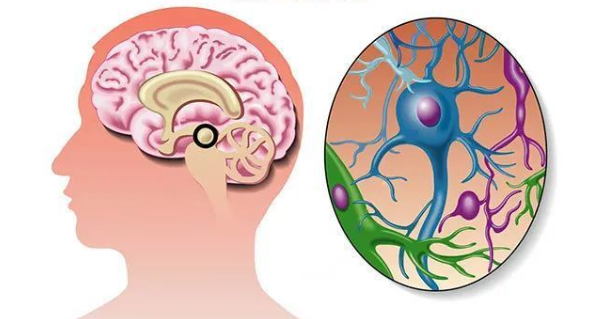

Neurodegenerative Diseases - Parkinson's Disease (PD)
Neurodegenerative Diseases - Parkinson's Disease (PD)

Parkinson's disease (PD) is a neurodegenerative disease, due to the rapid structural deterioration of the substantia nigra region of the brain, which fails to produce the neurotransmitter “dopamine”, limiting the brain's ability to direct movement and greatly hampering the patient's ability to move; the main clinical features of PD are bradykinesia accompanied by at least one other feature (static tremor, muscle rigidity, postural instability), disease symptoms and signs are often asymmetric, and are usually sensitive to levodopa treatment.
Many neurodegenerative diseases, protein misfolding and accumulation, based on pathological findings, Parkinson's syndrome can be divided into α-synuclein (α-syn) disease and tauopathies; α-synucleinopathies and tauopathies often overlap, and tauopathies, α-synucleinopathies coexist with tauopathies in neurons and oligodendrocytes of the patients. There are complex and dynamic interactions between α-synuclein and tau proteins. Abnormal accumulation of one protein can predispose another protein to aggregation; for example, α-Syn can induce tau protein accumulation, forming amyloid tau protein inclusion bodies.
Currently, the diagnosis of Parkinson's syndrome relies heavily on clinical insight combined with
A marker, an objective test that assesses normal biological processes, pathologic changes, and pharmacologic responses to interventional therapy. An ideal biomarker should be highly sensitive, reproducible, closely related to the disease process, inexpensive, and non-invasive.
Compared to other body fluids, cerebral spinal fluid (CSF) has more relevance to the brain and therefore represents a potential and reliable source of biomarkers. Unlike plasma, the blood-brain barrier does not isolate CSF from the brain. Most of the proteins as well as peptides that directly respond to brain-specific activities and pathological changes are able to diffuse into CSF. In addition, CSF can be tested serially to study protein alterations involved in pathological processes, and thus CSF contributes to some extent to the diagnosis of PD.
Parkinson's syndrome, like most neurodegenerative diseases, has complex and dynamic interactions between the underlying pathologies; large-scale, longitudinal cohort studies combining different forms of biomarkers are needed for early diagnosis and accurate prognosis, and the following is a list of some relevant molecular targets for PD:

Related molecular targets
1) Aβ42: a 42 amino acid peptide that tends to accumulate into amyloid. Cognitive impairment and dementia are more common in patients with Parkinson's syndrome than in the normal population, and have a negative impact on quality of life and life expectancy;
2) α-synuclein (α-syn): a 140 amino acid long protein localized to presynaptic nerve terminal and widely distributed in the brain; α-Syn is thought to be an intracellular protein that is capable of transferring between cells, leading to the pathologic changes in PD;
3) tau proteins and phosphorylated tau proteins: tau proteins are essential for microtubule function in axons and play an important role in the structural integrity of neurons and axons. When over-phosphorylated, microtubule binding affinity decreases, leading to impairment, while the abnormal conformation leads to protein accumulation and inclusion body formation;
4) Neurofilament proteins: Neurofilament proteins are the main structural units that maintain the axonal diameter and the size and shape of the neuron; therefore, they are exceptionally important for the morphological integrity of the neuron and the conduction of nerve impulses. They are composed of 3 different molecular weight proteins: light chain, intermediate chain, and heavy chain.
5) Glial Fibrillary Acidic Protein (GFAP): GFAP is a protein mainly expressed in astrocytes; it has been found that the level of GFAP in the CSF of patients with Parkinson's syndrome is significantly higher than that of healthy people;
6) 8-hydroxydeoxyguanosine (8-OHdG): 8-OHdG is one of the markers of oxidative and mitochondrial dysfunction in neurodegenerative diseases and malignant tumors; it has been shown that levels of 8-OHdG are significantly higher in non-demented PD patients than in control subjects in the CSF;
7) Uric acid: Uric acid is an endogenous potential antioxidant component. Although there is much evidence suggesting that PD patients have lower serum levels of uric acid, cerebrospinal fluid studies have not yielded consistent results.
8) Chemokine ligand 1 (fractalkine): Fractalkine is a cellular inflammatory factor that plays a neurotrophic and anti-apoptotic role in the central nervous system.
ELK Related Products
|
Product Name |
Cat/No. |
Application |
Species |
|
Human Ab1-42(Amyloid Beta Peptide 1-42) ELISA Kit |
ELK2100 |
ELISA |
Human |
|
Rat Ab1-42(Amyloid Beta Peptide 1-42) ELISA Kit |
ELK4897 |
ELISA |
Rat |
|
Mouse Ab1-42(Amyloid Beta Peptide 1-42) ELISA Kit |
ELK4915 |
ELISA |
Mouse |
|
Human SNCa(Synuclein Alpha) ELISA Kit |
ELK1812 |
ELISA |
Human |
|
Mouse SNCa(Synuclein Alpha) ELISA Kit |
ELK2941 |
ELISA |
Mouse |
|
Rat SNCa(Synuclein Alpha) ELISA Kit |
ELK7204 |
ELISA |
Rat |
|
Human pMAPT/pTAU(phosphorylated microtubule-associated protein tau) ELISA Kit |
ELK8412 |
ELISA |
Human |
|
Rat pMAPT /pTAU(phosphorylated microtubule-associatedprotein tau)ELISA Kit |
ELK9247 |
ELISA |
Rat |
|
Mouse pMAPT/pTAU(phosphorylated microtubule-associatedprotein tau) ELISA Kit |
ELK9618 |
ELISA |
Mouse |
|
Human MAPt(Microtubule Associated Protein Tau) ELISA Kit |
LK2729 |
ELISA |
Human |
|
Mouse MAPt(Microtubule Associated Protein Tau) ELISA Kit |
ELK2999 |
ELISA |
Mouse |
|
Rat MAPt(Microtubule Associated Protein Tau) ELISA Kit |
ELK6015 |
ELISA |
Rat |
|
Rat NEFL(Neurofilament, Light Polypeptide) ELISA Kit |
ELK0342 |
ELISA |
Rat |
|
Human NEFL(Neurofilament, Light Polypeptide)ELISA Kit |
ELK3205 |
ELISA |
Human |
|
Mouse NEFL(Neurofilament, Light Polypeptide) ELISA Kit |
ELK6650 |
ELISA |
Mouse |
|
Human NEFH(Neurofilament Heavy Polypeptide) ELISA Kit |
ELK0657 |
ELISA |
Human |
|
Human GFAP(Glial Fibrillary Acidic Protein) ELISA Kit |
ELK1626 |
ELISA |
Human |
|
Rat GFAP(Glial Fibrillary Acidic Protein) ELISA Kit |
ELK1627 |
ELISA |
Rat |
|
Mouse GFAP(Glial Fibrillary Acidic Protein) ELISA Kit |
ELK1628 |
ELISA |
Mouse |
|
8-0HdG(8-Hydroxydeoxyguanosine)ELISA Kit |
ELK7861 |
ELISA |
General |


